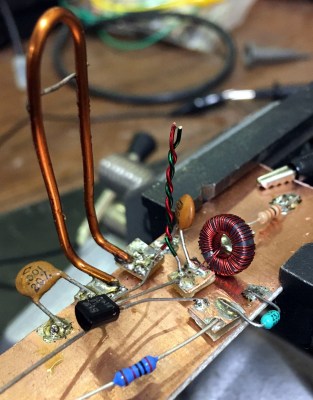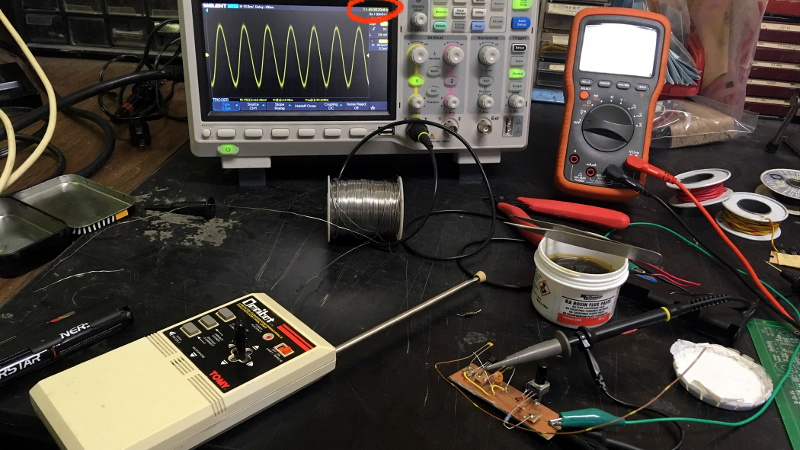We’ve seen no shortage of projects that use the ESP8266 or ESP32 to add “smart” features to existing home appliances, often by pairing the microcontroller with a radio or IR transmitter. If your device has an existing remote, integrating it into a custom home automation system is often just a matter of getting a few cheap modular components and writing some simple code to glue it all together.
But what if the appliance you want to control doesn’t use a common frequency? That’s a question that [eigma] recently had to answer after finding the remote control for the bedroom ceiling fan was operating at a somewhat unusual 304 MHz. Something like the MAX1472 could probably have been tuned to this frequency, but the chip doesn’t seem to be available in a turn-key module as the popular 315 MHz transmitters are.
 There were a few possible options, including using a software defined radio (SDR), but [eigma] didn’t want to spend a fortune on this project or wait months for parts to get shipped from overseas. The most straightforward solution was to design a custom transmitter tuned to the proper frequency using discrete components; something of a dark art to those of us who’ve been spoiled by the high availability of modular components.
There were a few possible options, including using a software defined radio (SDR), but [eigma] didn’t want to spend a fortune on this project or wait months for parts to get shipped from overseas. The most straightforward solution was to design a custom transmitter tuned to the proper frequency using discrete components; something of a dark art to those of us who’ve been spoiled by the high availability of modular components.
What follows is an fascinating look at the design, testing, and troubleshooting of a truly scratch-built transmitter. You won’t find any ICs here, the carrier signal is generated with just a transistor, some carefully measured pieces of wire, and a handful of passive components. By modulating the signal with an ESP32, [eigma] successfully makes the oddball ceiling fan an honorary member of the Internet of Things.
The write-up that [eigma] has done is an absolutely invaluable resource if you ever find yourself in need of rolling a bespoke transmitter. It easily ranks among some of the most informative radio reverse engineering work we’ve covered, and you’d be wise to file this one away for future reference. That said, most of the newer hardware you’re going to run into will probably be utilizing a widely-supported frequency like 433 MHz.
















Holy smokes! This is an impressive hack! I have spent all semester building a 7 MHz transceiver from mostly discrete parts (I believe we used two mixer chips and one LM3_ _ audio amplifier chip). That was a big learning experience, and even 7 MHz was pretty finicky. But 300MHz? I will definitely be saving the write-up for my own future experiments.
I’ve built AM transmitters using a coil of wire and a single transistor and also two capacitors and of course a single cell. But wow!
RFM69 could be used .. they have 315MHz modules which should go down to 290MHz, but I have no idea who sells them, they seem to be mostly available as 433/866 MHz. I guess to get something out of it one could modify the matching network for the 433 MHz one.
Diregarding other construction practices, transistor with such long leads can be a disaster to the circuit performance.
Very nice project
I had solved the same use case for Hampton Bay Ceiling fans ( 303.8 Mhz ) by scoring an additional remote and salvaging it’s saw resonator and installing it into 315 Mhz transmitter module. And to drive the module used an esp-8266 running a IR Controller package. Surprising the signal modulation between the RF and IR was similar enough that I could use the same code base for both.